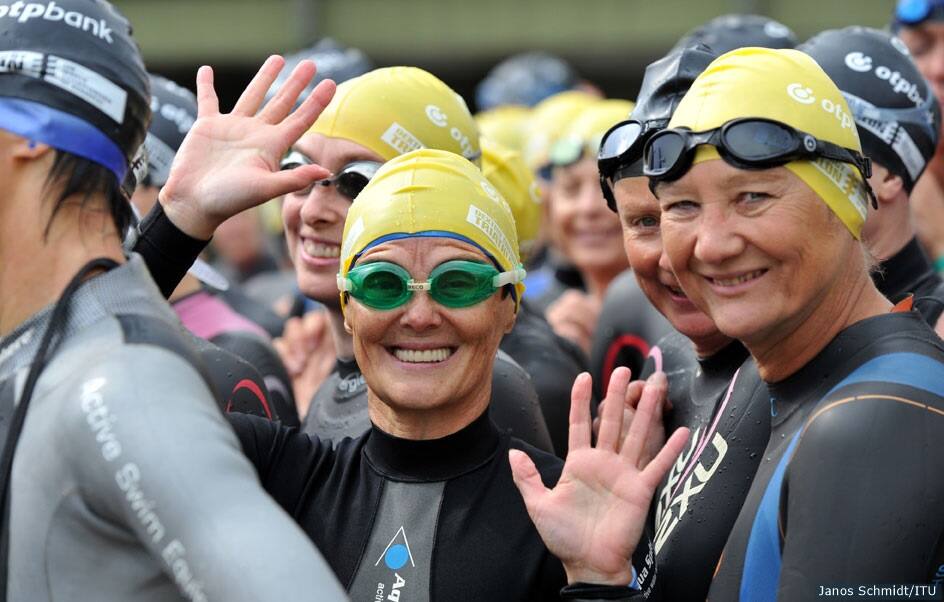Aquathlon #

Aquathlon is a fun and fast-growing sport that combines running and swimming. A typical aquathlon is a run/swim/run combination; however it is not uncommon to see a two-stage race which is simply a swim/run combination.
The run can take place on a trail, a road or a path. It just depends on what the course calls for and where it is located. Similarly, the swim can take place in any body of water – a pool, a reservoir, an ocean, etc.
Some aquathlons are designed to help endurance athletes train for bigger multisport races and improve their swim/run transition or open water swim times while others are designed for athletes who are just getting into the multisport lifestyle and want to “get their feet wet” in the sport.
Who Competes in Aquathlons?
As far as ITU Aquathlon World Championships, eligibility is granted to many stand-out pro triathletes, under 23 athletes and junior athletes. On a national level, aquathlons are gaining popularity among many athletes who want to challenge themselves athletically and improve their endurance but are not interested in the biking leg of triathlons. Whether you are afraid to ride without training wheels, cannot afford a bicycle, or are sick of the saddle sores and road rash that come along with hours of cycling training, aquathlon offers solutions to all these problems.
Possibly some of the most attractive aspects of this sport are that the race distances are short so less training time is required, equipment needs are minimal and it is a fairly inexpensive sport to get into.
Aquathlons are also quite appealing to race directors because it not only reduces the logistics by removing one of the legs from a triathlon, but it also reduces the amount of space needed to hold a race. As a result, competitors can race in a smaller, more manageable environment.
Getting Started
As mentioned earlier, very little equipment is needed to compete in an aquathlon – athletes will need a swim suit, goggles, a cap, running shoes and motivation to train and compete.
Triathlon race directors across the nation are beginning to respond to the demand of athletes interested in the run/swim combination by offering aquathlons in conjunction with the triathlons they are putting on. It is not uncommon to find a triathlon that also has an option for duathlon or aquathlon.
Common Race Distances
|
|
RUN |
SWIM |
RUN |
|
Short |
|
|
|
|
Kilometer |
1.6-6.3 |
0.4-1 |
1.6-6.3 |
|
Mile |
1-3.9 |
0.25-.62 |
1-3.9 |
|
Intermediate |
|
|
|
|
Kilometer |
6.4-12.8 |
1.1-2 |
6.4-12.8 |
|
Mile |
4.0-8 |
0.63-1.25 |
4.0-8 |
|
Long |
|
|
|
|
Kilometer |
12.9-29.9 |
2.1-3.1 |
12.9-29.9 |
|
Mile |
8.1-18.5 |
1.26-1.9 |
8.1-18.5 |
|
Ultra |
|
|
|
|
Kilometer |
30+ |
3.2+ |
30+ |
|
Mile |
18.6+ |
2.0+ |
18.6+ |
Aquathlon: Distances are categorized by using the category in which two of the distances fall.
Note: If the aquathlon is just a swim/run then the event is categorized by the longest run.
Youth
|
Race Age |
SWIM |
RUN |
Best Practices |
|
Youth 7-8 |
50 - 100 meters |
1 K |
Pool swim and closed roads |
|
Youth 9-10 |
100 meters |
1.5 K |
Pool swim and closed roads |
|
Youth 11-12 |
200 meters |
2 K |
Closed roads |
|
Youth 13 - 15 |
200 - 375 meters |
2 - 3 K |
Closed roads |
Who is behind the rules and organization of aquathlons?
USAT created an Aquathlon Commission made up of five volunteer age group members. The Commission selects qualifying aquathlon events and works with the age group athletes. They try to answer questions that arise, direct interested participants to events in their areas and generally help anyone interested in aquathlon.
History
The official start date of aquathlon is unknown, although running and swimming origins are ancient. Arguably, the first aquathlon event in the USA was three years before the inaugural Mission Bay Triathlon and seven years before the first Ironman when the Dave Pain Birthday Biathlon consisting of a run and swim were held in San Diego (USA Triathlon Life, 2006).
Distances vary depending on location and water temperature. Originally aquathlons were designed to make the total running time equal to the total swimming time so neither the strong swimmer nor the strong runner had an advantage. However, alterations have been made in the past that do not accommodate this strategy.
For example, in 2004 at the ITU Aquathlon World Championships in Queenstown, New Zealand, the swim took place in a lake that was fed by glaciers – causing the water to be very cool. Because of this, racers were permitted to wear wetsuits. However, because it is extremely difficult to make a fast transition when you have to put a wet suit on directly after completing a 5K run, the first run was omitted – altering the race to a 1000-meter swim followed by a 5K run.
Contacts
Contact any of the Age Group Commission members for more information regarding aquathlon. Click on a name to send an e-mail.